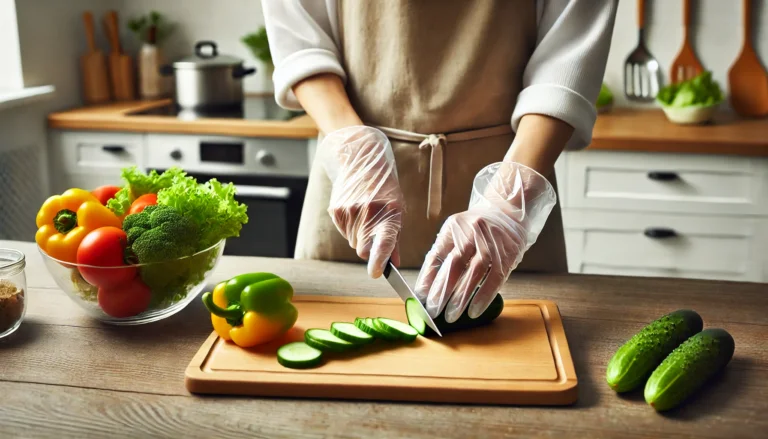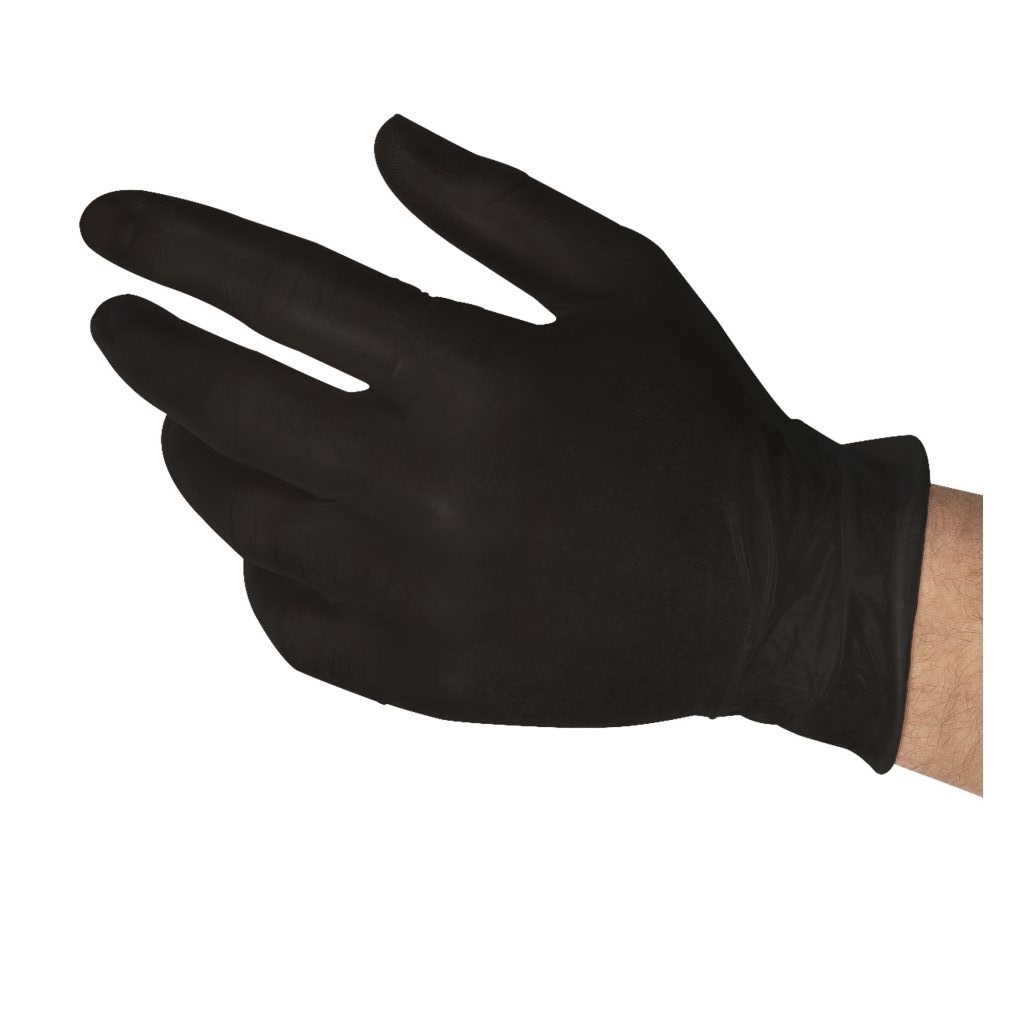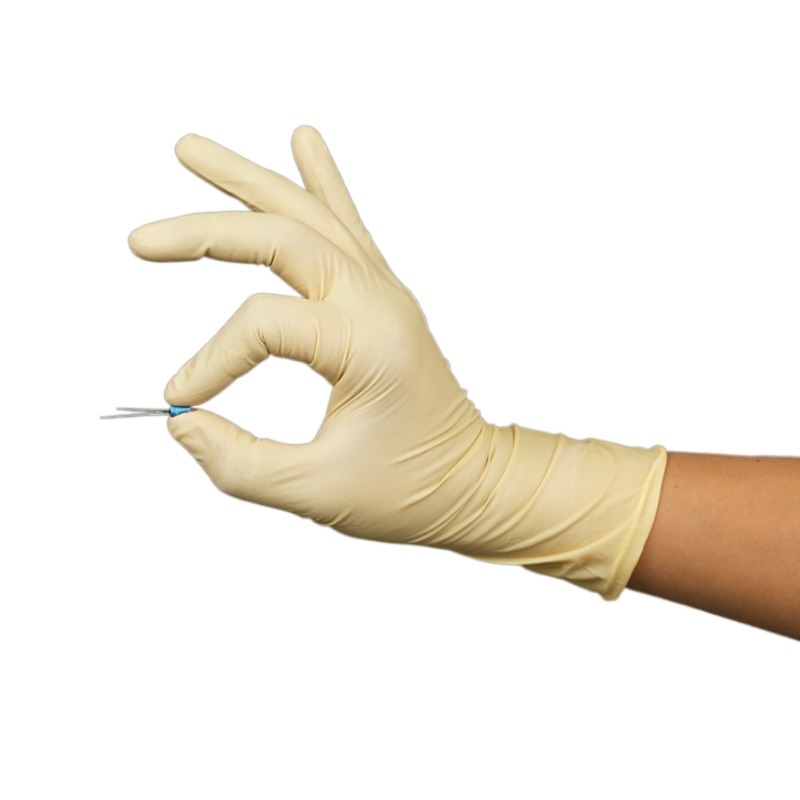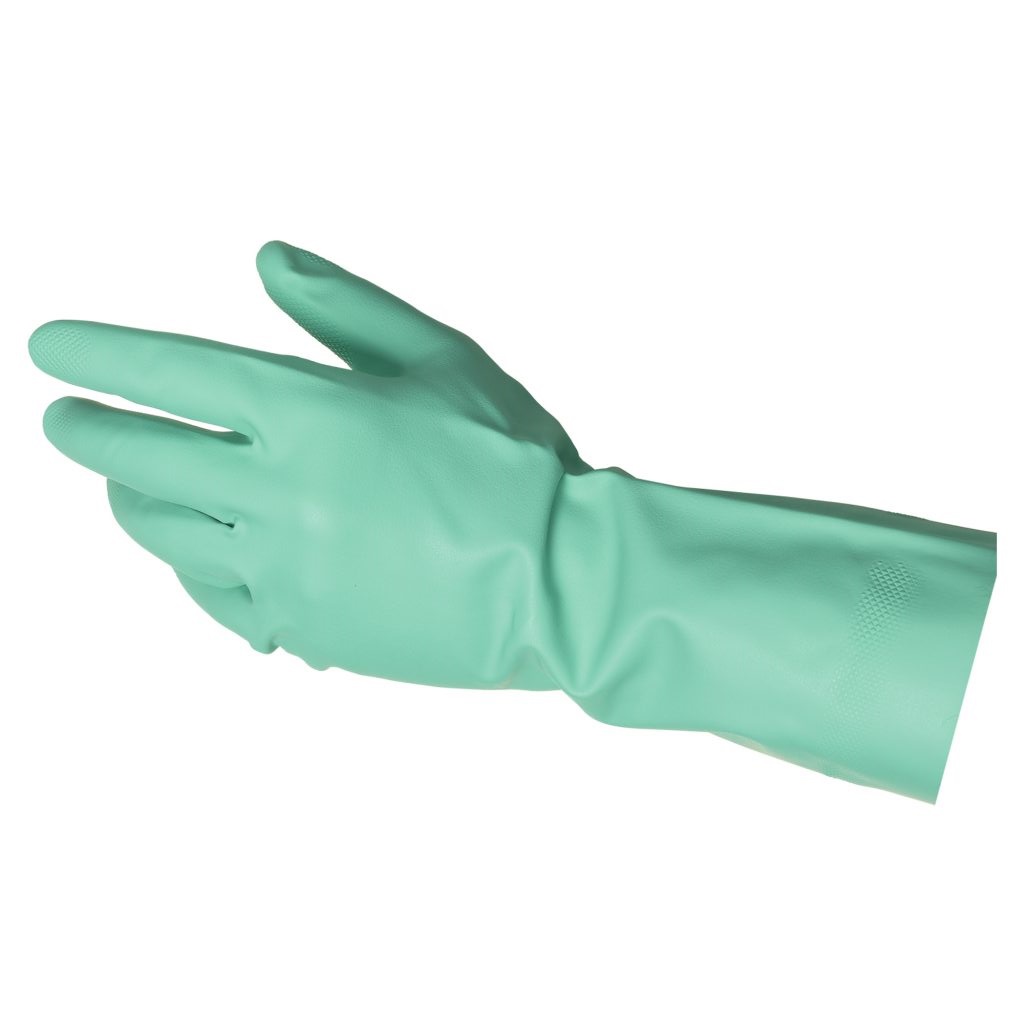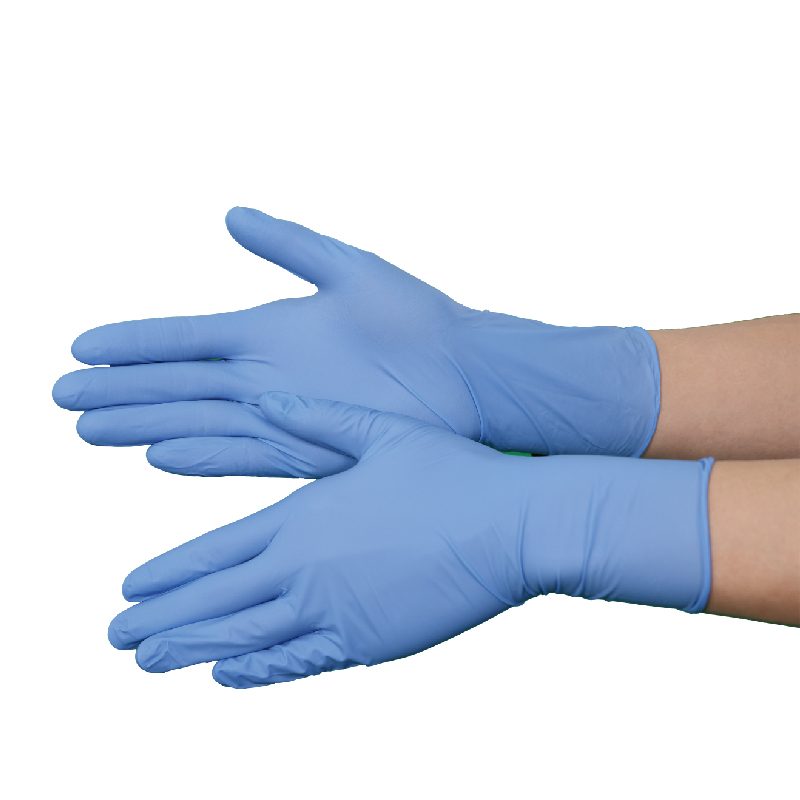Vinyl gloves are often seen as an affordable and convenient solution for food service environments. Marketed as latex-free and powder-free, they’re widely used in restaurants, food packaging, and cafeterias. But how safe are they really when it comes to handling food?
In this article, we’ll peel back the assumptions and marketing claims surrounding vinyl gloves and dive into their chemical composition, safety risks, regulatory standards, and viable alternatives for food contact. If you’re responsible for food hygiene in any setting, this is a conversation worth your attention.
What Are Vinyl Gloves?
Vinyl gloves are made from polyvinyl chloride (PVC) resin and plasticizers—usually phthalates—that make the glove material flexible. Unlike nitrile or latex gloves, which are made from natural or synthetic rubbers, vinyl is a type of thermoplastic polymer. That means it doesn’t possess the same elasticity or memory, which affects fit and durability.
The appeal of vinyl gloves lies in their low cost, ease of manufacture, and the fact that they’re naturally latex-free, making them seemingly ideal for environments with latex-sensitive staff or customers. But their chemical formulation is key to understanding their safety limitations.
Why Vinyl Gloves Are Popular in Food Handling
From a business standpoint, vinyl gloves check many boxes:
-
Low cost: They’re among the most affordable disposable gloves on the market.
-
Latex-free: Ideal for avoiding allergic reactions associated with natural rubber latex.
-
Ease of donning and removal: The looser fit makes them convenient for short, repetitive tasks.
-
Light-duty protection: Sufficient for low-risk food prep like sandwich assembly, bakery handling, or salad tossing.
These features have contributed to vinyl gloves becoming a staple in the food service industry. However, widespread usage doesn’t always equate to optimal safety.
Are Vinyl Gloves Safe for Food Contact?
This is where things get complicated. Vinyl gloves are approved by regulatory bodies like the U.S. FDA for incidental food contact, but that doesn’t mean they’re risk-free.
1. Plasticizer Migration
The biggest concern lies in the migration of plasticizers—especially phthalates—into food. To make PVC flexible enough to be worn as gloves, manufacturers add plasticizers such as DEHP (di(2-ethylhexyl) phthalate) or DINP (diisononyl phthalate). These substances are not chemically bound to the PVC and can leach out, particularly when exposed to:
-
Hot foods or cooking oil
-
Acidic foods (like tomatoes or citrus)
-
Prolonged contact time
Several studies have shown that vinyl gloves can transfer phthalates into food during handling. These chemicals are known endocrine disruptors, and some have been linked to reproductive toxicity and developmental issues.
2. Lower Barrier Integrity
Vinyl gloves have a higher failure rate in terms of barrier protection. A widely cited FDA study found that vinyl gloves were 10x more likely than nitrile gloves to fail quality standards for pinholes and microtears. In a food handling scenario, this means contaminants from hands may reach the food unnoticed.
Food Safety Regulations and Vinyl Gloves
Let’s break down how vinyl gloves are regulated globally for food contact:
-
United States: Vinyl gloves are regulated under 21 CFR Part 177.2600, which allows for certain phthalates
-
European Union: Regulation (EU) No 10/2011 on plastic materials and articles in contact with food places stricter restrictions on phthalates like DEHP, DBP, and BBP.
-
Canada: Health Canada has voiced concerns over DEHP exposure in vinyl gloves used with fatty foods, recommending nitrile as a safer alternative.
-
WHO & FAO Codex Guidelines: These generally recommend minimizing chemical migration from packaging and handling materials, although glove-specific guidance is minimal.
The regulatory picture is evolving, but many food safety experts now recommend choosing alternative materials, especially when handling oily or hot foods.
Stretch Vinyl Gloves: A Safer Evolution?
“Stretch vinyl” gloves—also called synthetic vinyl—aim to overcome some of the limitations of traditional PVC by blending vinyl with elastomers or other softening agents. They offer improved flexibility and fit, but the same issues with plasticizer migration often persist. Unless specifically certified as food-safe and phthalate-free, they may not represent a meaningful improvement for food safety.
Vinyl vs Nitrile Gloves for Food Handling
Let’s compare two popular choices:
| Feature | Vinyl Gloves | Nitrile Gloves |
|---|---|---|
| Material | PVC with plasticizers | Synthetic rubber (NBR) |
| Elasticity | Poor | Excellent |
| Chemical Resistance | Low (esp. oils/acids) | High |
| Puncture Resistance | Low | High |
| Phthalate-Free? | Often no | Yes |
| Food Contact Risk | Higher (migration) | Lower |
| Cost | Very low | Moderate |
In high-risk or high-heat food environments, nitrile gloves are clearly the safer option. Vinyl may still have a place in low-risk, short-duration food service, but it’s far from universal.
Industry Perspective: The Shift Away from Vinyl
Over the last five years, large food retailers and service chains in North America and Europe have gradually phased out vinyl gloves, citing concerns about safety and sustainability.
Notable examples include:
-
Whole Foods Market: Recommends nitrile or polyethylene gloves in all food-prep areas.
-
UK NHS Guidelines: Strongly discourage the use of vinyl gloves for food handling in hospitals due to their low barrier performance.
-
California Department of Public Health: Suggests avoiding vinyl gloves with high-fat foods unless certified free of harmful plasticizers.
As awareness grows, many institutional buyers are proactively revisiting their glove selection policies, especially in light of emerging chemical migration research.
How to Choose the Right Gloves for Food Safety
Here’s a simple checklist when evaluating gloves for food handling:
-
✅ Look for phthalate-free or DINP-free labeling
-
✅ Choose gloves that meet FDA 177.2600 or EU 10/2011 food contact standards
-
✅ Prefer nitrile or polyethylene over vinyl when handling oil-rich or acidic foods
-
✅ Don’t reuse disposable gloves
-
✅ Educate staff on proper donning, doffing, and hand hygiene practices
Final Thoughts
Vinyl gloves have earned their place in foodservice for affordability and convenience, but their safety in all food handling situations is not guaranteed. The risk of chemical migration—especially with fatty, acidic, or hot foods—combined with lower durability makes them less ideal for many food environments.
While vinyl may be suitable for low-risk, short-contact tasks, food safety professionals should consider nitrile gloves as a more robust, compliant, and hygienic alternative, especially in regulated or high-risk settings.
